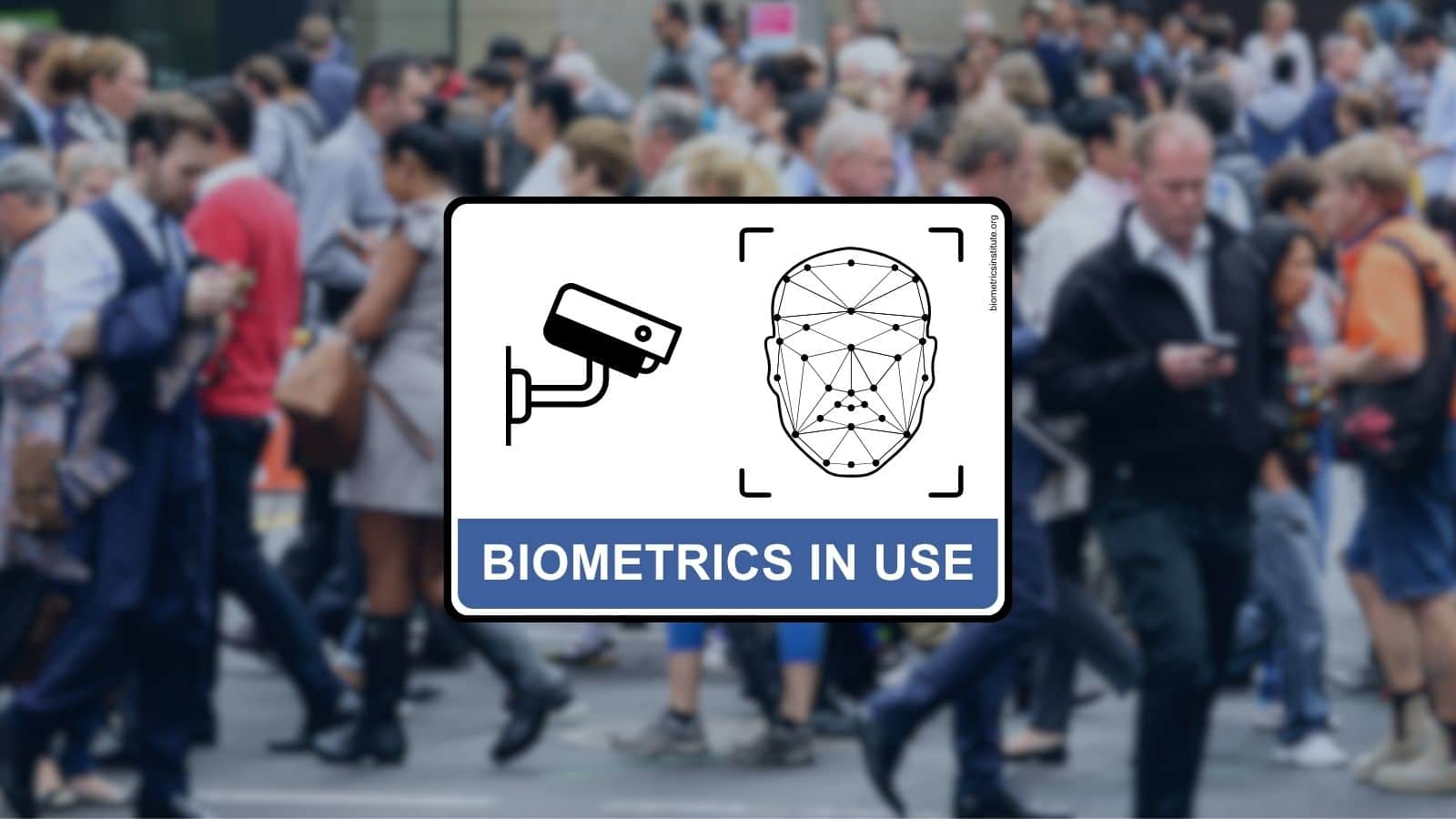
Biometrics Institute publishes Members’ Viewpoints on Facial Recognition in Publicly Accessible Places, advocates for ethical and proactive governance
As the use of facial recognition technology (FRT) and live facial recognition (LFR) become more widespread, the Biometrics Institute invited its members to share their viewpoints and compiled the responses in its Members’ Viewpoints: The Use of Facial Recognition in Publicly Accessible Places. It then presented these insights to the Office of the Australian Information Commissioner (OAIC) who were discussing facial recognition in retail and commercial spaces in a workshop in July.
During the workshop, the Biometrics Institute emphasised that biometrics are complex and highlighted that different use cases present different levels of risk. The Institute underscored the need for these risks to be assessed, planned and diligently managed.
The paper addresses several critical considerations regarding current approaches to FR technology. Members have observed a need for clear definitions within existing guidance, noting that some “guidance fails to clearly define what those considerations entail”. This absence of nuance for varied FRT applications and risk differentiation, whether live or static analysis in public or private settings, is seen as a “significant regulatory oversight”. Furthermore, the Institute points out that regulators should remember that FRT isn’t just a surveillance tool, recognising its increasing use in “compliance and safety-enhancing technologies”. As members articulated, the ethical application of FRT “can be a force for good—not just a risk”, citing its potential to reduce human error, and protect vulnerable individuals, especially children when enforcing consent.
The biometric expectation paradox
A key aspect of the Institute’s viewpoint addresses the apparent digital double standards in how facial recognition technology is currently treated. It highlights the paradox where the ubiquitous capture and sharing of facial images via smartphones and security cameras in public is generally accepted without consent, yet real-time FR for security purposes often demands explicit permission. This extends to a human versus machine paradox where human recognition by security personnel is unquestioned, even with less accuracy, while more precise machine recognition often requires explicit consent. Concerns are also raised about the governance, maintenance, and sharing of watchlists, with calls for stricter governance and greater transparency on how individuals are added or removed, and clearer legal authority for sharing these lists.
In response to these challenges, the Biometrics Institute encourages a proactive governance model. Operations should be fully transparent and developed following the Institute’s Three Laws of Biometrics – Policy first, followed by process and then the technology– and the Good Practice Framework (GPF). This framework, a robust risk management tool, helps organisations question and answer critical considerations when implementing biometrics. The Institute’s good practice guidance is a benchmark for all regulators to help enhance privacy frameworks while more effectively and proportionately addressing privacy concerns related to FRT, acknowledging that what is deemed lawful and proportionate may differ across jurisdictions. The Institute also offers foundational training to help organisations understand the fundamentals of biometrics and how to apply these principles effectively.
Providing clear signals for public consent
Recognising the complexities of managing consent in publicly accessible spaces, especially given the varying levels of understanding, potential language barriers and regional nuances, the Biometrics Institute has proposed standardised signage for the use of FRT. This signage, incorporating both pictograms and text, aims to provide clear and unambiguous notice to the public, promoting clarity where facial recognition usage occurs. The Institute has sought feedback on this proposed signage from its global membership over the past few months and is in the process of finalising it.
Darren Bark, Deputy Chairman of the Biometrics Institute stated:
“While this signage won’t solve every complexity surrounding consent and notice in public spaces, it’s an important first step in the right direction. We believe clear and consistent communication is paramount to building public trust, acting as a deterrent for harmful behaviour, and understanding of these technologies.”
The Institute’s Head of the Privacy Expert Group, Terry Aulich, echoed this sentiment adding:
“Providing clear, understandable signals through well-designed signage empowers individuals with essential information. This initiative reflects our commitment to practical solutions that enhance transparency and privacy, even as we continue to address the broader challenges of biometrics in public spaces.”
The Institute remains steadfast in its commitment to how biometrics are implemented and used as CEO, Isabelle Moeller reminds us:
“A spade is a tool. It can be used to plant a tree, or it can be used to cause harm. What matters is not the tool itself, but how it is used, and for what purpose.”
Technology will continue to form a part of daily lives, and the Institute urges all stakeholders to engage with its tools and guidance, fostering informed decision-making, clear communication, and transparency to protect all individuals. Any biometric implementation should be designed to meet independently reviewed standards for responsibility, ethics and effectiveness.
The Institute offers extensive support for the responsible use of biometrics with its good practice guidance, including the Three Laws of Biometrics and Good Practice Framework (GPF). You can also explore the supplier directory to engage with technology providers committed to the responsible and ethical use of biometrics.
We encourage you to engage with a community committed to shaping the future of biometrics responsibly and to read our new paper, Members’ Viewpoints: The Use of Facial Recognition in Publicly Accessible Places, for additional insights, including perspectives on what regulators in other parts of the world are doing.
This new paper complements our existing guidance and builds upon previous discussions, such as those presented in the Biometrics Institute’s Members’ Viewpoints: The Use of Facial Recognition in Policing paper. The Institute continues to lead important conversations on the use of biometrics, fostering ongoing dialogue and collaboration to ensure its responsible and ethical deployment.
ENDS
About the Biometrics Institute
The Biometrics Institute is the independent and impartial international membership organisation for biometric users and other interested parties. It was established in 2001 to promote the responsible, ethical and effective use of biometrics. It has offices in London and Sydney.
The member register which represents a global and diverse multi-stakeholder community now lists over 200 membership organisations from 43 countries. It includes banks, airlines, government agencies, biometric experts, privacy experts, suppliers, academics and 18 Observers representing United Nations agencies, IGOs and European Union institution.
The Biometrics Institute connects the global biometrics community. It shares knowledge with its members and key stakeholders and most importantly, develops good practices and thought leadership for the responsible, ethical and effective use of biometrics.
For more information, please email Marco Lombardi.




